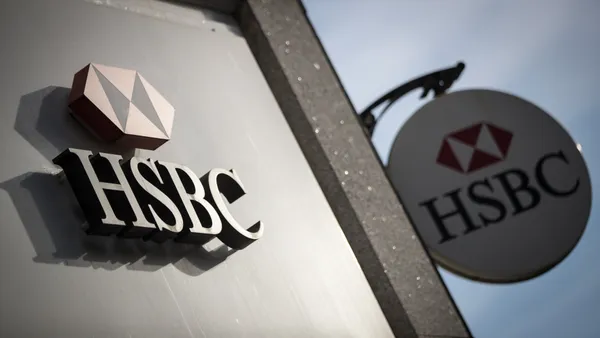Dive Brief:
-
U.K. fintech startup Curve introduced its new Curve card — and accompanying app — equipping users to consolidate and access all their credit cards through one single Curve account.
-
Curve, dubbing itself as an "over-the-top" banking platform, does not create a new credit account, but rather connects other credit and debit cards together, while the mobile app switches which account is presently active. Features include its "time travel" functionality, where if a user makes a purchase with the wrong credit card, they can simply open the Curve app and switch the card that had been charged. If a user loses their Curve card, they can freeze the Curve card in the app and thus protect all credit cards synced with the account.
-
While Curve has not yet launched in the U.S., Amanda Orson, the company’s head of North America, told Banking Dive they hope to bring it to U.S. customers by 2021.
Dive Insight:
Even though Curve will fulfill a niche need in the personal finance market in the U.S. by consolidating and streamlining multiple bank accounts for ease of access, the U.K. fintech startup will face hefty challenges as it looks to debut in the U.S.
For one, Orson said, advertising during a presidential election year is "very expensive," and they will need an issuing bank partner.
Then there’s the sheer amount of competition from other credit card companies and fintech companies vying for consumers’ wallets.
Orson described the target market as higher-income individuals in their 30's working in the tech or finance industries, who own multiple credit cards, and who travel and dine out regularly.
"It’s an enormous market, so I think the biggest initial challenge is finding a market that is receptive to this product," she said. "I think it’s a mistake to market to everyone. In the U.S. we just have a lot more cards, and esoteric-use cards, like store credit cards which represent a large percentage of all credit cards used. In addition we have benefits cards that they don’t have in the U.K. The competition in the U.S. is stronger."
Right now, Orson said Curve has roughly 900,000 sign-ups. About 60% of those are U.K. users, she said, and the other 40% are in the broader European economic area (EEA). Even though there are no Curve offices outside of the U.K., customers can sign up and use the Curve card in 31 EEA countries. The company hopes to launch in 6 European countries in 2020, according to a company spokesperson.
Orson thinks the reason why European customers are so excited for Curve is because it "harmonizes" with Apple Pay, a new feature Curve launched a few weeks ago.
"[You can sign up for Curve], effectively making all our bank cards able to work with Apple Pay," Orson said, "so that will be huge for our European customers."
Orson added harmonizing with Apple Pay is "a huge part of what we think we can bring to market" in the U.S.
The big selling point for Curve, though, is leaning into the banking-as-a-service (BaaS) trend.
"The one thing I think Curve does really well is have a very intense customer-centric focus," Orson said.
Clarification: The company explained that even though they do not have localized services throughout Europe, customers can still use the card in 31 EEA countries.













